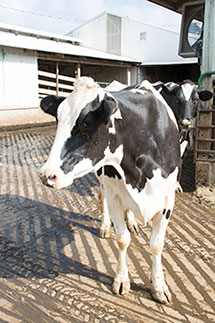 I can remember the first time we detected digital dermatitis, also referred to as hoof warts or hairy heel warts, in my family's herd. It was in the early 2000s, and we had recently purchased a few cows to expand our herd. What we got was a little more than we had bargained for – an ongoing battle against digital dermatitis.
I can remember the first time we detected digital dermatitis, also referred to as hoof warts or hairy heel warts, in my family's herd. It was in the early 2000s, and we had recently purchased a few cows to expand our herd. What we got was a little more than we had bargained for – an ongoing battle against digital dermatitis.What my family has learned over the last 15 years is that digital dermatitis is not a problem that can be ignored away. Management commitments to hoof health are necessary to reduce the prevalence of the disease in the herd. That begins with classification of digital dermatitis. One method for doing so was introduced in the 1990s by Dörte Döpfer and associates.
Their scale, which has become the standard for ranking digital dermatitis, classifies warts into one of five categories.
- Not Present: Normal digital skin with no signs of digital dermatitis.
- Small Growth: Early, small, circumscribed red to gray epithelial defect of less than 0.75 inches in diameter. The growth doesn't effect walking.
- Large Growth: Acute, active bright red or red-gray digital skin alteration. It is larger than 0.75 inches in diameter. The growth is extremely painful.
- Healing: The lesion has covered itself with a firm scab-like material. The growth will become smaller.
- Chronic: Lesions may be hard and thickened skin, continuous warts or both. The cow can suffer from chronic lameness.
Considering the widespread prevalence of the disease and the virtual inability for dairies to eliminate it, farms may struggle to decide where to begin treating and managing the disease. In a recent University of Kentucky Dairy Notes article, Alexis Thompson and Jeffrey Bewley suggest the fresh cow group may be a good starting point. Cows in this group are typically the most vulnerable to infection because of a weakened immune system and relatively low hoof health management during the dry period.
No matter the size of herd or prevalence of infection, it is clear that dairies that stay on their toes in classifying and managing digital dermatitis reap rewards in overall long-term herd health and productivity.

The author is the Special Publications editor. She is responsible for development and marketing of books and plans, as well as coordinating internal communication pieces. Maggie was raised on a 150-cow dairy near Valley Center, Kan. and graduated from Kansas State University with degrees in agricultural communications and animal sciences.







